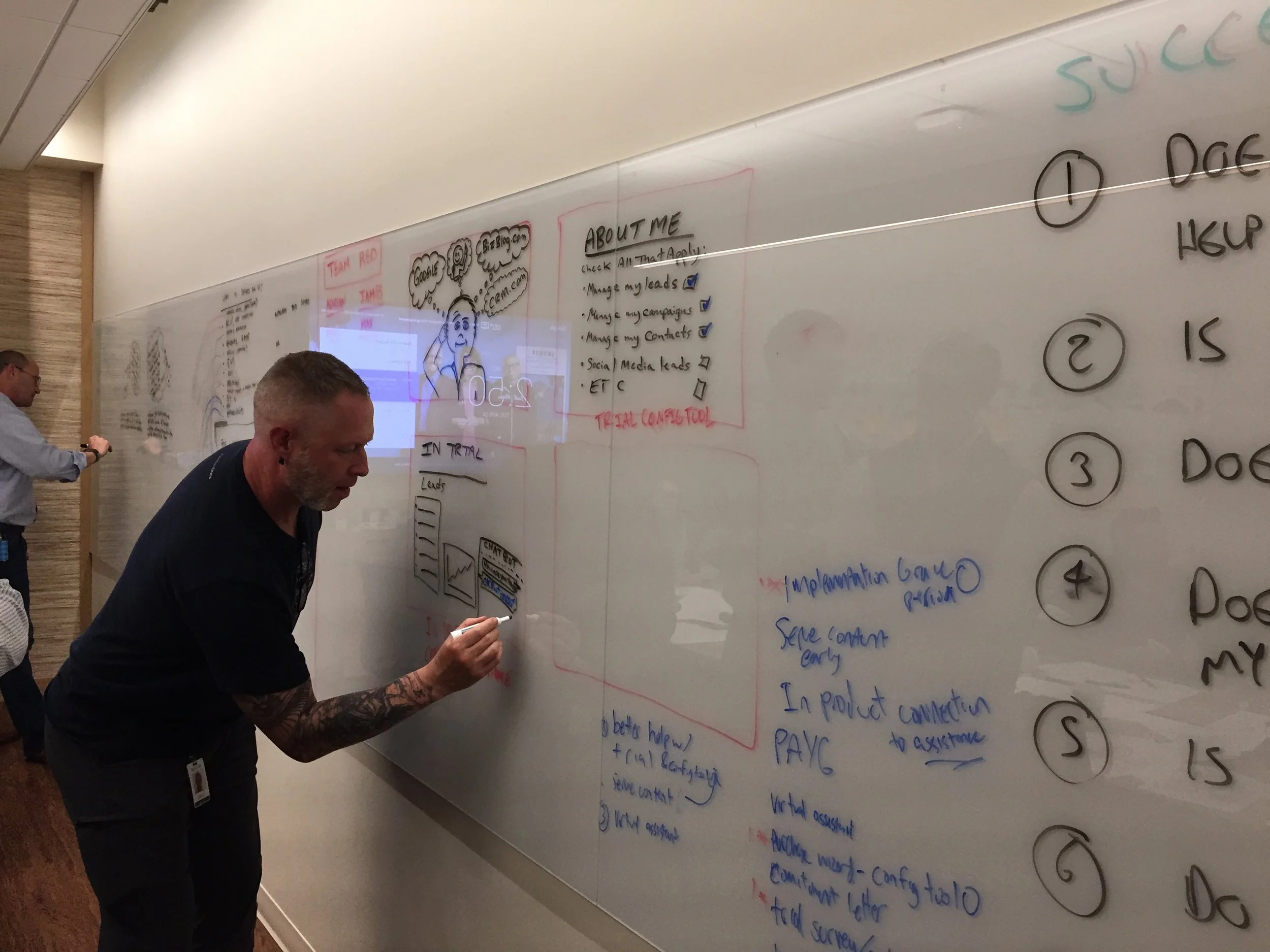Salesforce End to End Customer Journey
Office of the C-suite tapped Slalom to help Salesforce put together a big picture customer journey with most pressing customer pain-points. Salesforce as an organization wanted to bring more rigor in identifying and funding IT initiatives strategically while keeping a customer lens at the center of everything. We researched existing and ongoing customer studies across Salesforce, conducted 1:1 research and surveys to create a current state and future state journey map that would help Salesforce executives align on most pressing customer pain points, see the big picture and create a roadmap for a “customer happy” Salesforce ecosystem.
Researching and Mapping
We talked to stakeholders across the organization to connect all the silos based on how customers would engage with these departments along their duration of relationship with any Salesforce product.
Marketing
Sales
Product
Billing and Finance
Customer Support
IT
Voice of the Customer
Trailhead
The workshops
Day 1: After meeting with all stakeholders and leadership team, our Slalom team put together a Journey Map based on their inputs then brought all the stakeholders together for a workshop to ratify our map. Everyone heard each others pain-points and quickly aligned on where the biggest gaps and hurdles exist in customer experience.
Day 2: We asked our workshop participants to collaborate and ideate on solutions on how they might work with each other on a solution that will address key pain-points across the whole journey. These ideas directed a vision and a future state where customer receives an exceptional Salesforce experience.
Current State
Given the complexity of Salesforce’s business, product line-up, user base and process, we had to recognize the differences between organizational personas, buyer personas and user personas. Once the Salesforce leadership team understood the difference between engagement models through difference phases of the journey map they were all ready to see how the emotional experience of these personas was mapped throughout the journey.
To make the journey map actionable, business leadership guided us to narrow down the journey to Small-Medium-Business (SMB) customers. This allowed us to map linear process, cyclical processes and un-clear processes with obstacles and intersections of choices that a customer could go down. Overlaying all the activities with emotional responses and severity of pain-points that we had gathered from user feedback forums, customer support tickets data, VoC research data and product user research information allowed leadership to engage with departments within Salesforce on what their role is and partnership opportunities to fix the pain-points.
Future State
Based on solutions and ideas generated by our workshop participants, we strung together a future looking journey map. We identified 4 key moments during the entire journey that are critical to the customer and experiences should be build around them. Based on anecdotal and SME information we were able to best guess how it would impact the emotion line for Salesforce’s customers.
Once current and future state journey maps were reviewed by the IT Steer Co. at Salesforce and was presented to the C-suite, recommendations and pain-points were socialized across the entire organization to get alignment on priorities and gaps in the Salesforce customer engagement model. Departments were able to align with the IT roadmap and budget allocation to create a pain-free customer experience of the future.








